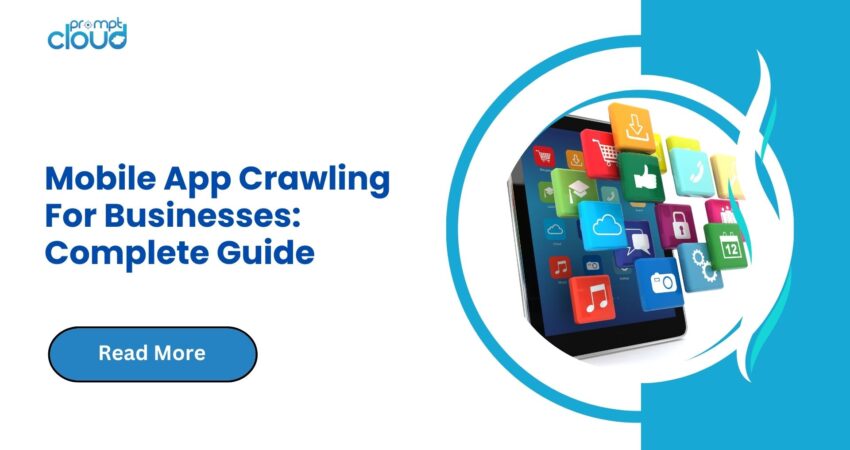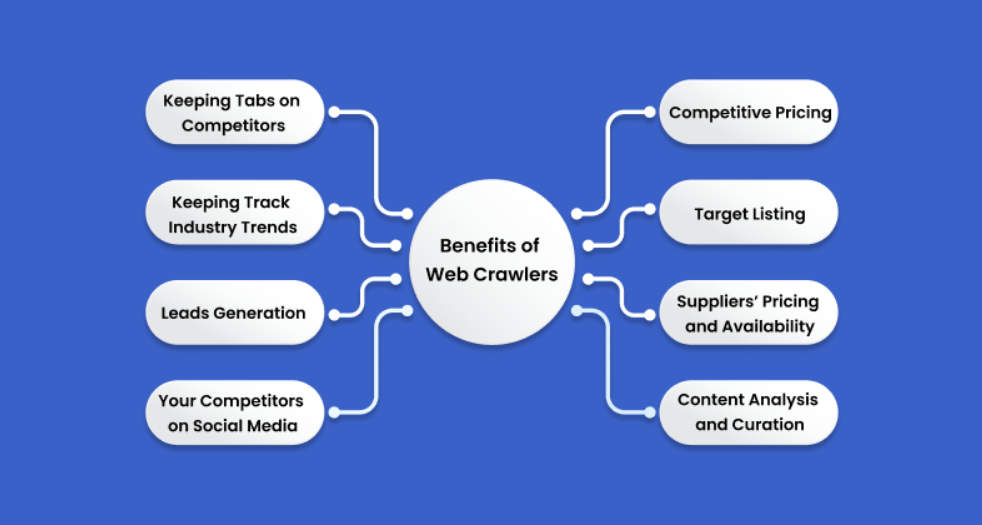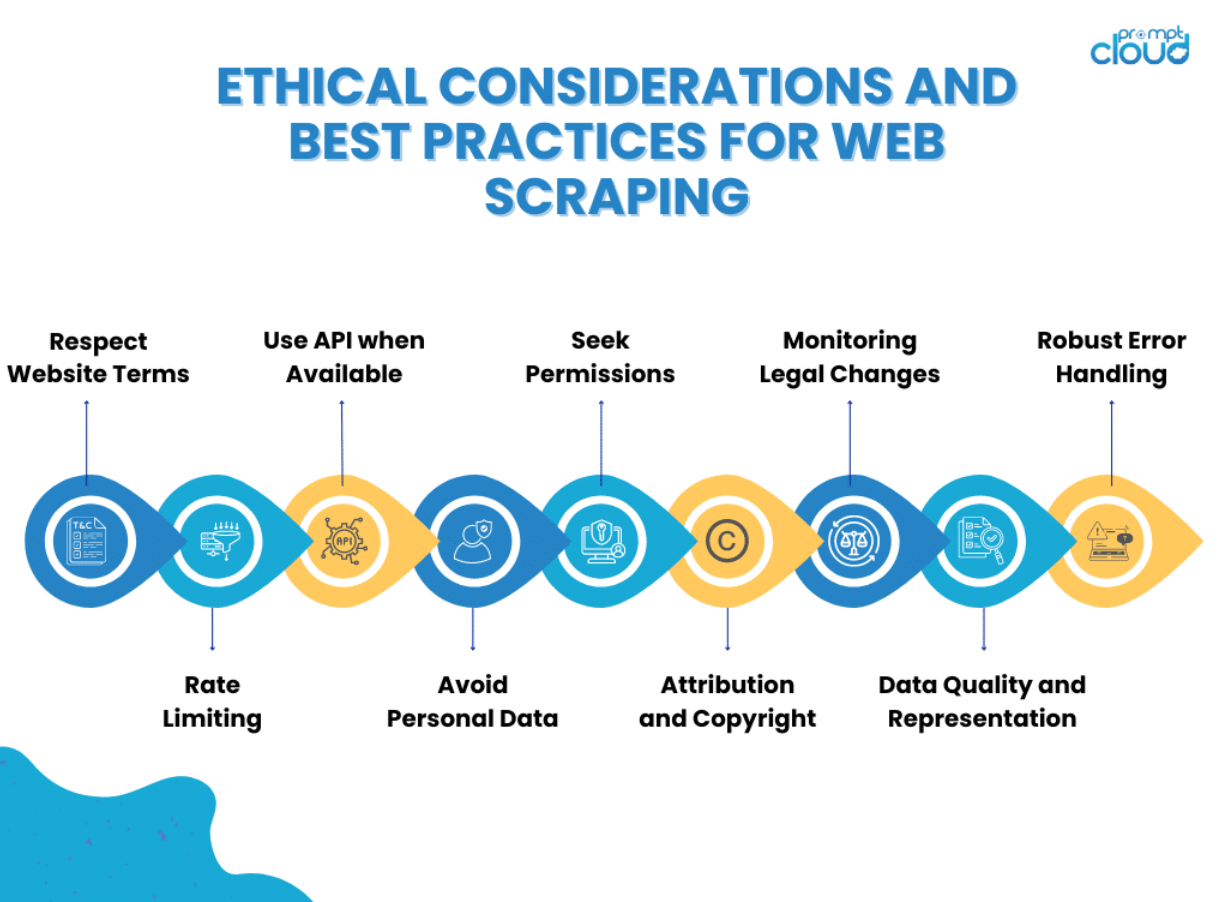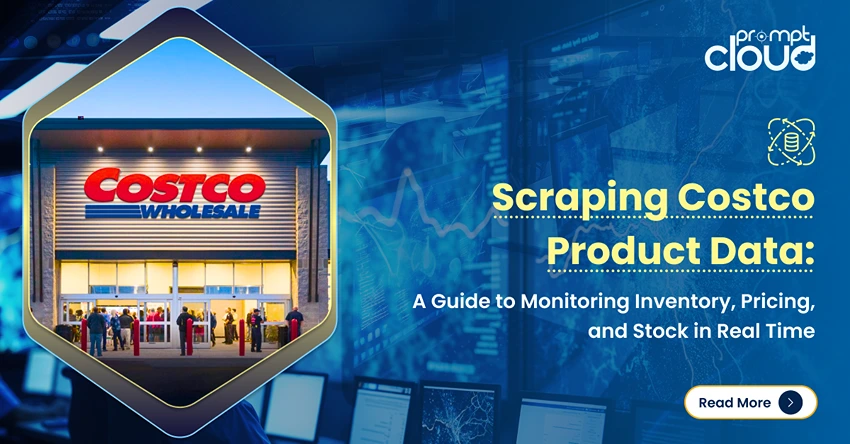
Mobile app crawling is the practice of navigating through the functionalities and screens of a mobile application automatically. It mimics the actions of a real user and extracts data from the app interface. The data then is used for market research, competitor analysis, and price comparisons. This is achieved by extracting information, such as product details, pricing, and others through its API without interacting with the application directly.
Mobile app crawling is like web crawling. However, instead of going through websites, it looks deeply into the screens and interactions inside the mobile application.
App Crawling
Crawling, also called scrapping, a mobile app is the process of recognizing screen data. They are like digital spies working quietly behind the scenes to extract important information from different mobile apps. They provide many benefits to businesses.
Crawling is important as it lets the business access and analyze data from the app, which gives valuable insights into user behavior, competitor activity, market trends, and overall app performance. A business can then use this information to improve the app, identify new business opportunities, and optimize its marketing strategy.

How Mobile App Crawling Works
Web crawlers are computer programs that navigate through the internet automatically and follow hyperlinks for information collection. The search engines use them to index websites. Adapted for a mobile app, it gathers data specifically from the mobile web, which lets the developers analyze information from mobile applications and websites.
Key aspects of web crawlers for mobile apps –
- Mobile-specific data collection – Web data crawling targets mobile-specific URLs and mobile-specific content. They extract information from mobile application stores.
- API integration – The APIs of mobile apps let the crawlers access data, bypassing the need to scrape HTML from the mobile web.
- User-agent detection – Mobile crawlers have to identify themselves so that they are not blocked by the websites.
- Performance optimization – Battery usage, processing power, and network bandwidth all need to be considered while crawling on mobile devices.
Data extraction from mobile apps is a multi-step process. The correct tools and skills are both needed. This step-by-step guide will help you.
- Analyzing APIs – The app makes network requests to the backend servers and they are pulled by the APIs. The network requests can be intercepted by proxy tools to determine information movement between the server and the app.
- Automation to Extract Data – Once there is information on API behavior, data can be extracted or captured through various automation tools. Often, Python is used to scrap mobile apps because of its versatility and powerful libraries.
- Storage and Data Analysis – The extracted information is processed and stored either in the cloud or in databases. The data can be analyzed later using AI models or business intelligence tools.
A business must first have a strategy before doing web application crawling. Here are the steps that can be followed –
- Decide what kind of mobile data you need and the apps you want to investigate – Establish the data that interests you the most like customer feedback, competitor information, or product pricing. Identify the apps where you can get the data.
- Select the tool for web data crawling – Companies with technical capabilities can use Python with Selenium, Appium, and Scrapy. Those lacking the resources can look at custom enterprise software development services for data extraction.
- Review compliance and legal requirements – Read the terms of service of the app before crawling the content.
Business Use Cases for Mobile App Crawling
Here are some of the major web crawling advantages for businesses –
- Market Research, Competitor Analysis – App crawling is an excellent solution for business research and finding out what the competitors are doing. It can extract information from other applications, including those of the competitors. A business can then find out how well they are doing and look at their ratings and reviews. This data helps the business find out what is trending and identify the improvement areas.
- Content Creation, Trend Analysis – Web data crawling is valuable for content-centric platforms or apps. It can find important information from different sources, which helps the business design an engaging user experience. For instance, news aggregators can gather news articles from different websites so that the users can be fed with the latest news and analysis in detail.
- Price Monitoring – This refers to finding the cost of things in mobile apps that deal with online shopping. Price information can be collected from different applications, which will help businesses set the right price and stay competitive.
- Lead Generation – B2B apps can use mobile crawling for lead generation. A database of potential partners or clients can be compiled by finding data from trustworthy sources like directories and industry-specific websites. A business can then reach out to its prospects, which will help the organization grow.
- Sentiment Analysis – The emotional tone of comments and reviews of customers from the mobile apps can be extracted and analyzed, which will help businesses find out whether the customers like their products. This helps the business analyze what is working and what must be improved. The reviews will tell the business the problems the customers are facing.
- Data-Driven Decision-Making – Businesses rely on insights received from data analysis. A web crawling app allows an organization to gather information from different apps, which aids in competitor analysis and market research. This provides deep insights.
Web Crawling Legal Issues
The legality of web crawling is a debatable subject. Generally, extracting public information from apps and websites is legal. Amazon even offers dedicated APIs to help scrap public data for price comparisons. However, taking data from a private account will raise privacy concerns. There can be legal issues if the collected data is used in a way to contravenes laws. Also, some websites explicitly restrict scrapping activities. There can be legal consequences for violating the terms. Make sure to comply with robots.txt and API rate limits.

Challenges and How to Overcome Them
Web scraping and crawling have their challenges. Follow the guidelines to ensure that the crawling process is smooth.
- Terms and conditions – Most apps have terms of service. Review the guidelines and follow them.
- Intellectual property rights – Respect them when scrapping the mobile apps.
- Privacy issues – Crawlers have to deal with data protection and privacy laws. So, while crawling, make sure to abide by the different data privacy laws. Also, follow all data usage policies.
- Copyright – Many brands have proprietary authorizations. When extracting information, make sure not to use copyright materials.
- Industry regulations – Many industries don’t allow scrapping data as the data is often sensitive.
Mobile app crawling has a huge potential. It can improve the operations of a business and give it an edge. The applications are many, from monitoring competition and carrying out analytics to customer insights and personalization. However, make sure to follow all ethical and legal practices.



















